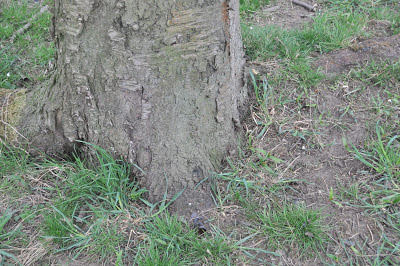This tree was originally imported from the Netherlands in the 17th and 18th centuries. At this time in history they were used to line streets and roads you can still see evidence of this today in the lime avenues along the roads. Lime trees were also planted in the grounds and gardens of stately homes across Great Britain.
The tree grows to 40 meters in height, if not pruned regularly they become difficult to manage and keep under control especially within the urban setting.
The leaves are in the shape of a heart and are about 10 cm long. The greenish yellow flowers appear in early July and smell very sweet and sickly. This attracts all species of bees, moths and insects who are attracted to the nectar.
Insects also feed on the leaves of these
trees especially Aphids which can cause undigested juice of the leaves to fall
on the cars and pavements below making the cars and pavements sticky and black
is can cause problems especially in the urban setting.
This mature common lime was found in a church, with very
little growth under this tree as it was very large and dominating the light available
on the ground.













































